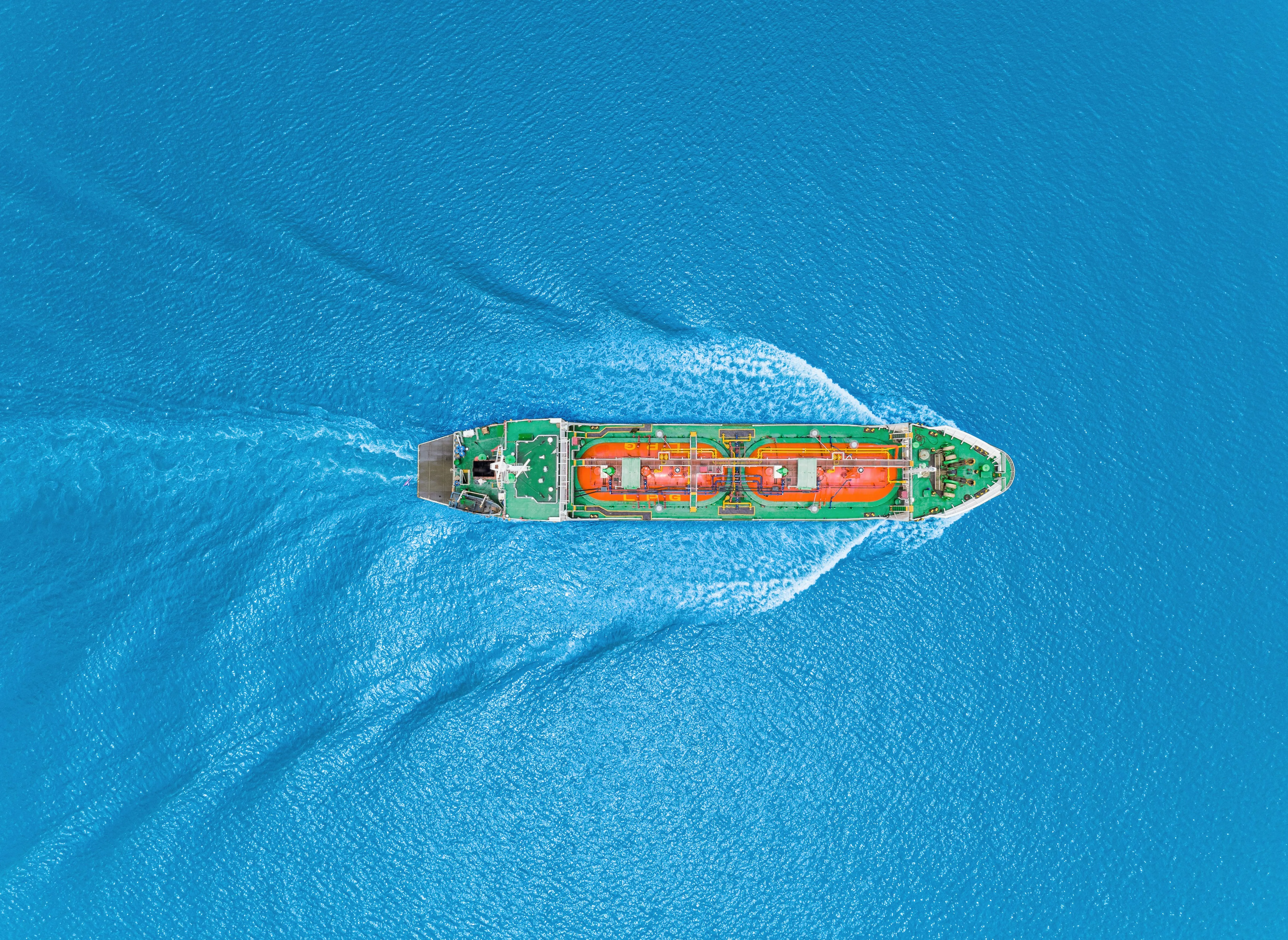Introduction
Lake Washington, one of the largest and most studied freshwater bodies in the Pacific Northwest, sits at the heart of a vibrant and ecologically sensitive watershed. Constructed in the early 1900s, the Ballard Locks connect Lake Washington and Lake Union to Puget Sound, a saltwater estuary. This connection allows cool, dense saltwater from Shilshole Bay to intrude inland, especially during lock operation cycles. Meanwhile, warm freshwater from Lake Washington flows in the opposite direction. This creates a saltwater wedge---a layered intrusion where denser saline water undercuts freshwater, forming a dynamic barrier that juvenile and adult salmon must cross. This transformation can be regarded as one of the most critical ecological challenges, since the disruption of natural freshwater-saltwater exchange directly impacts salmon migration. Each year, salmon must navigate complex gradients of temperature and salinity as they pass through the locks, creating physiological stress and potentially fatal barriers.
DSI developed a detailed EFDC+ hydrodynamic model to understand and address the influence of Lake Washington Ship Canal (LWSC) and Ballard Locks on the fish migration by simulating the interaction between temperature, salinity, and hydraulic operations through the locks. This blog examines how the model operates, what it reveals, and why it is significant for salmon recovery and waterway management. The Lake Washington model domain, grid structure, connected water bodies, and boundary zones are shown in Figure 1.
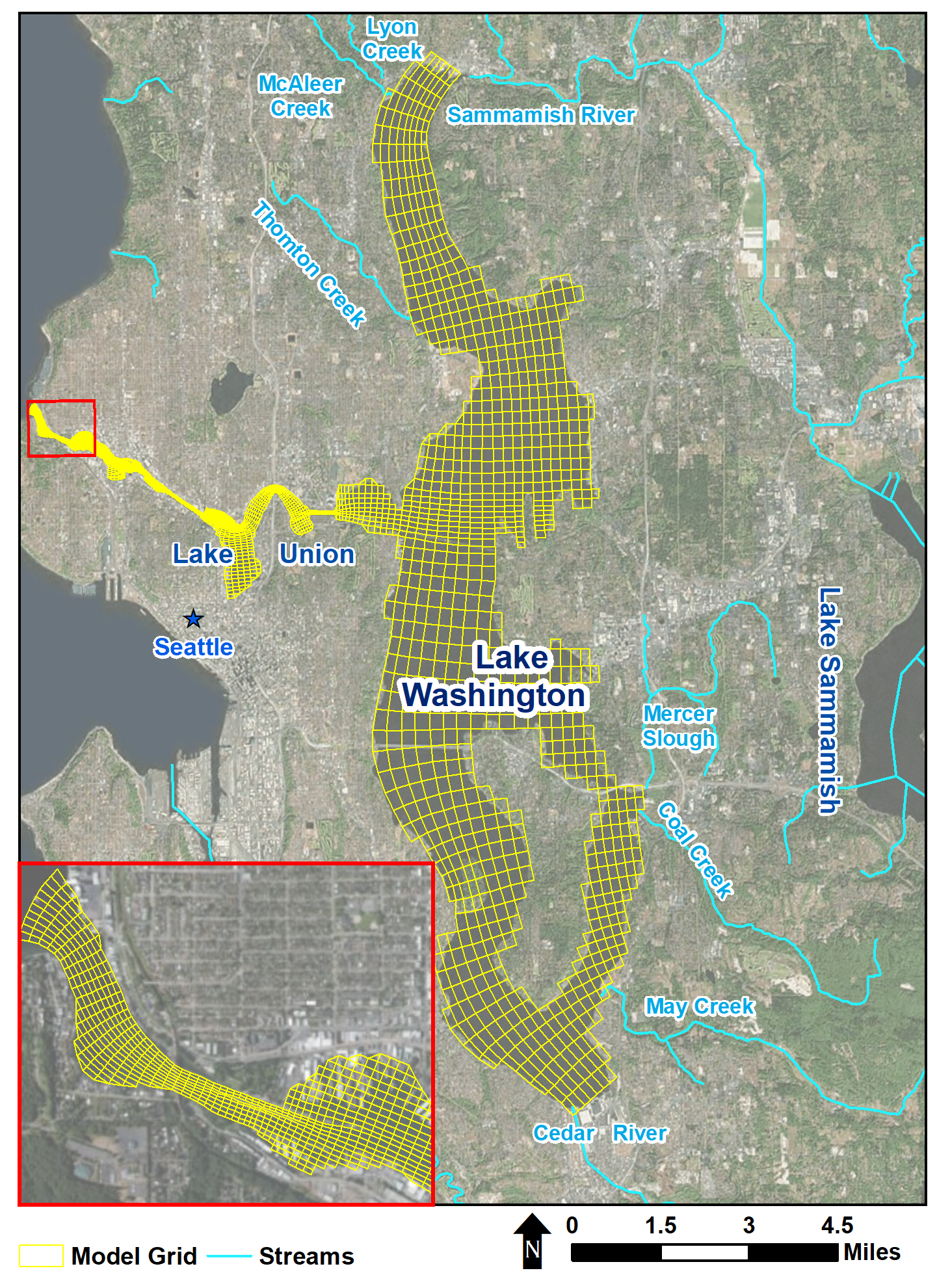
Modeling Approach with EFDC+
The Environmental Fluid Dynamics Code Plus (EFDC+) was used to replicate the detailed physical and hydraulic behavior of the Ballard Locks and surrounding water bodies. The model features:
-
2669 horizontal grid cells, with a sophisticated gridding approach for the locks as follows:
-
Two across cells and nine flow-oriented cells for the upper chamber and lower chamber combined at the large lock,
-
One across cell and two flow-oriented cells for the single chamber at the small lock,
-
Four across cells at the central canal.
-
70 vertical layers to resolve fine-scale stratification
-
-
Other boundary conditions:
-
The large and small locks,
-
Fish ladder,
-
Spillways.
-
Each component of the lock system, including gate states and diffuser flows, was precisely configured based on operational data to simulate the transfer of water through chambers during ship passages. A detailed schematic of the gate configurations and lock chamber simulation in the EFDC+ model is shown in Figure 2.
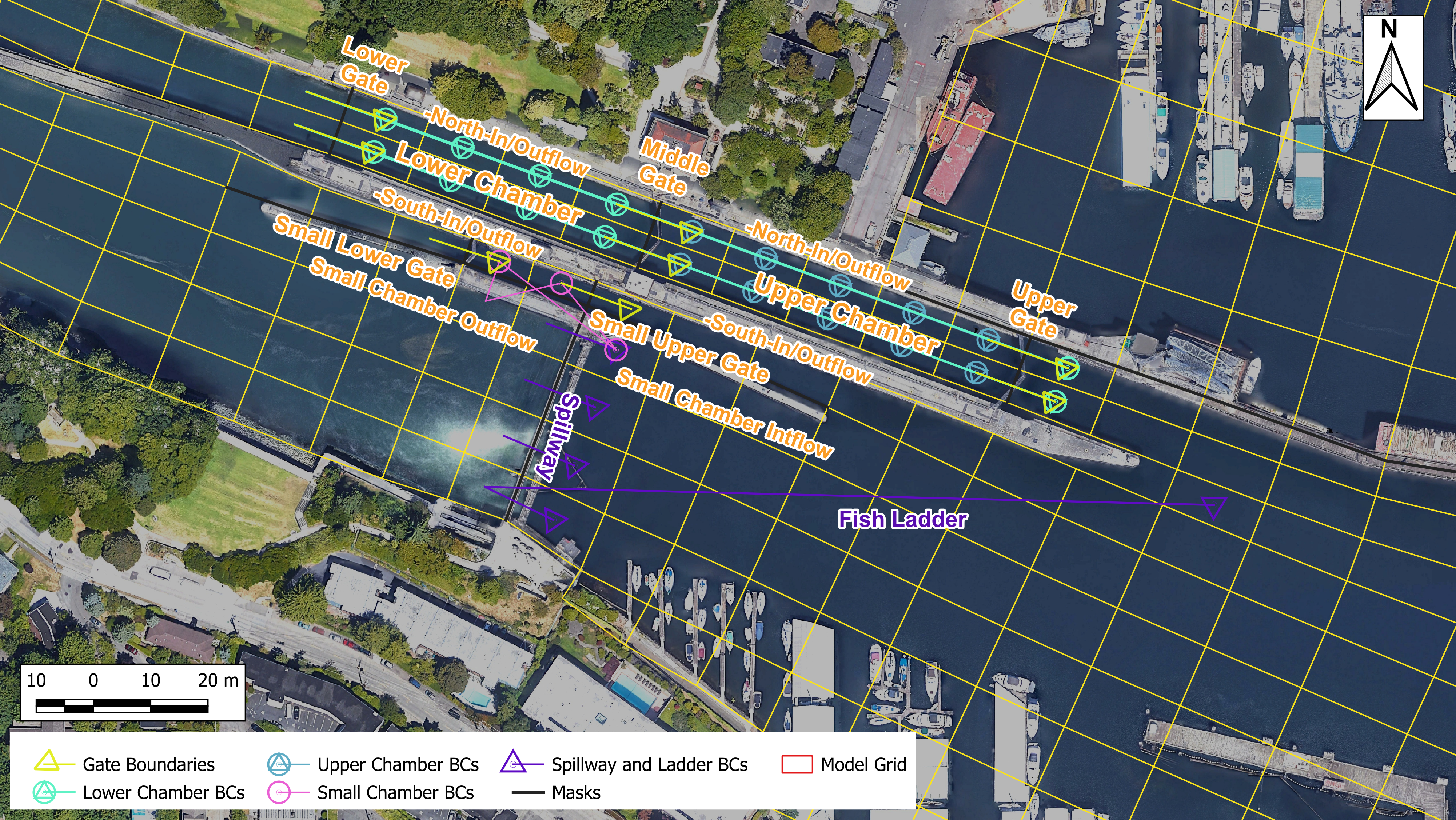
Detailed guidance for configuring the hydraulic structures, which include three gates for the large chamber and two for the small chamber, is provided in the EEMS Knowledge Base.
Simulated Results and Ecological Thresholds
As salmon are susceptible to water temperature, we examined the following salmon habitat temperature thresholds for fish survival and passage, defined based on the King County Synthesis Report (WRIA 8):
- Lethal Conditions per the King County Synthesis Report: 22 °C
- Temperature Allowing Fish Passage Based on Tracking Data: 19 °C
- Temperature Required for Salmonid Rearing and Migration Only 17.5 °C
- Core Temperature for Summer Salmonid Habitat: 16 °C
We compared the simulated water temperature at monitoring stations with the thresholds above. The locations of these monitoring stations are shown in Figure 3, while Figure 4 displays the water temperature comparisons. The simulation revealed that under specific operation approaches and seasonal conditions, water temperatures could exceed critical limits. The most profound exceedance is seen in shallow or slow-moving segments of the LWSC, potentially impairing salmon migration timing and survival.
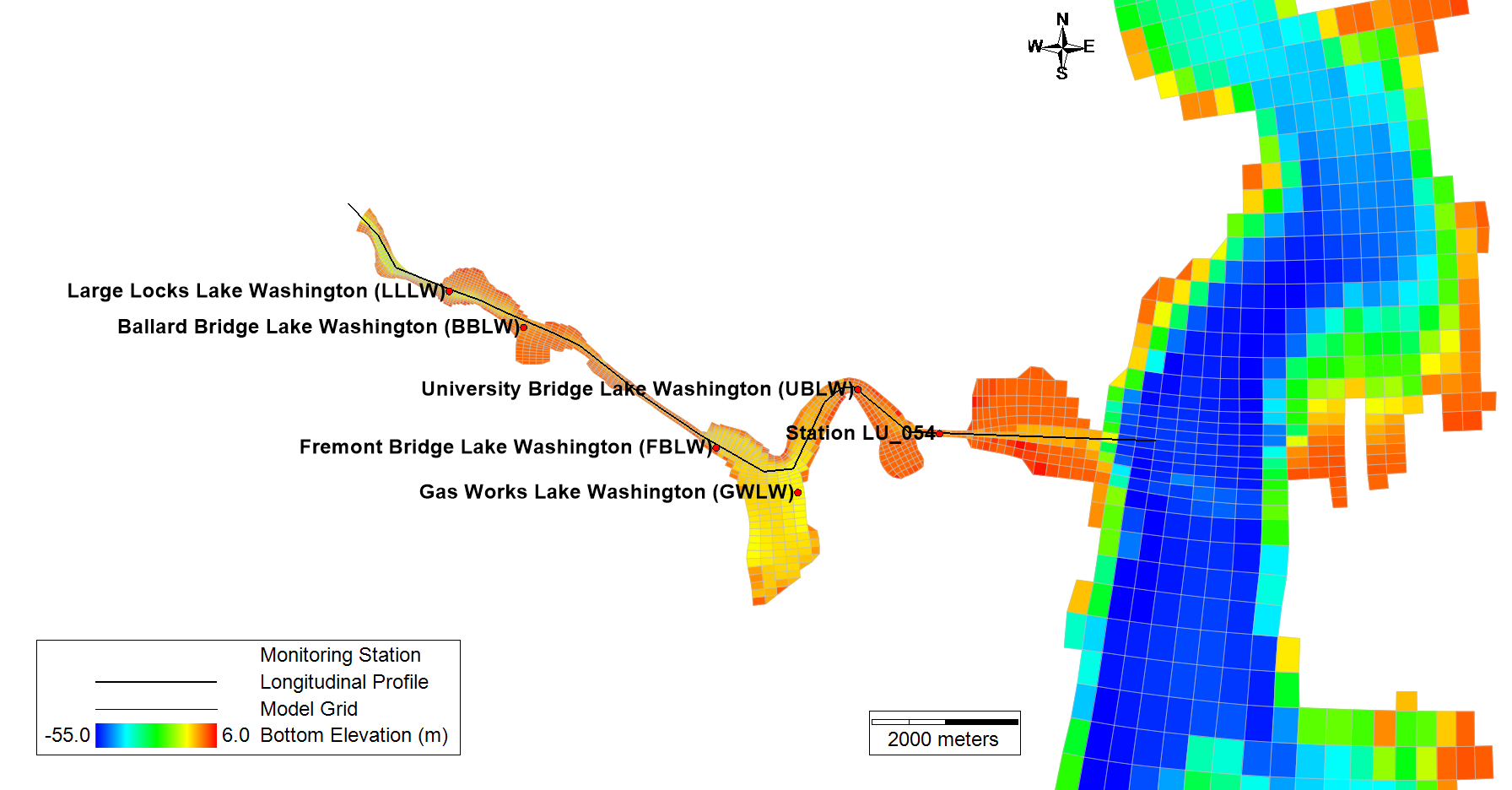
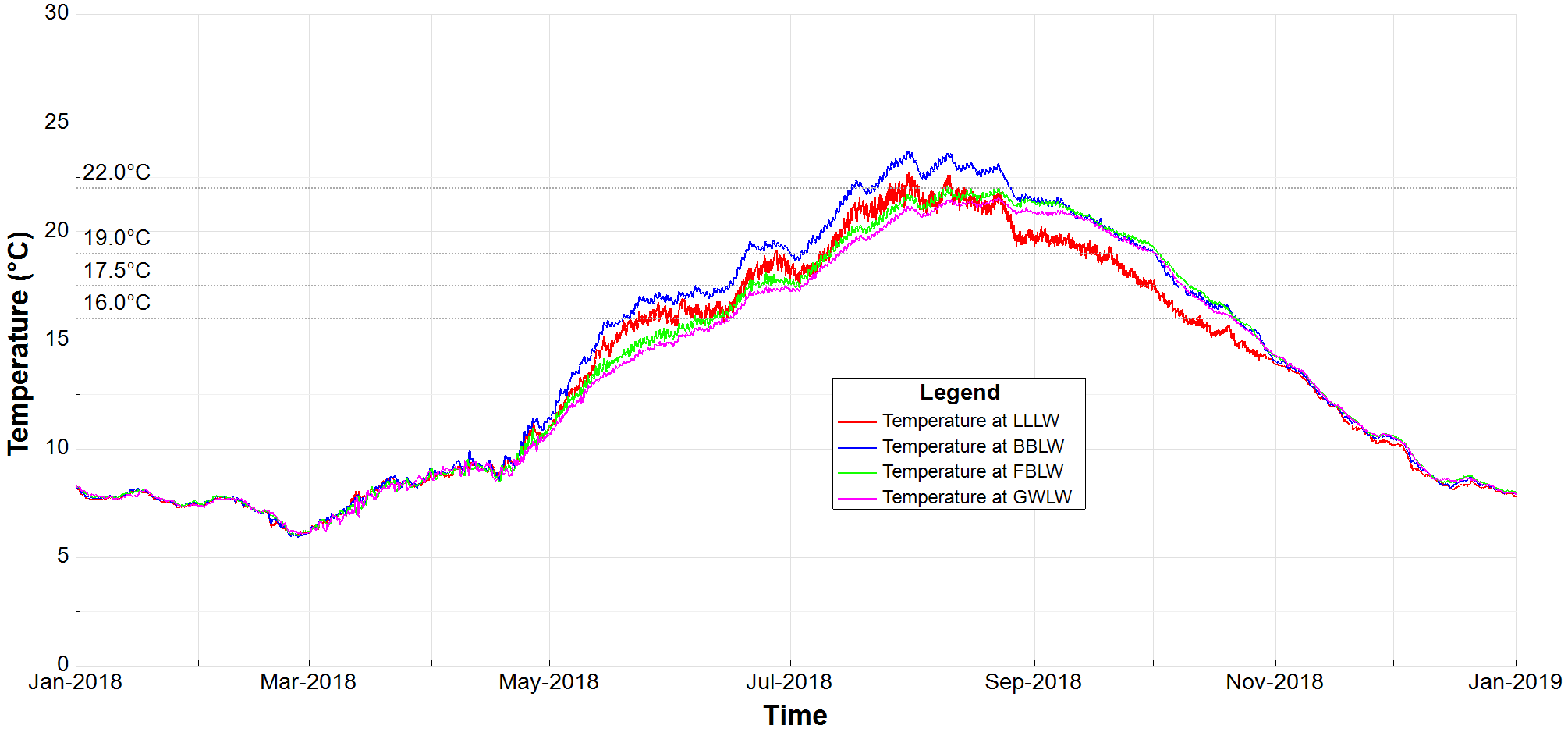
Visualizing the Longitudinal Profiles: Temperature & Salinity
The model was used to generate detailed vertical profiles along the LWSC to better understand how thermal and salinity stratification affect salmon migration corridors. The distribution of water temperature along the longitudinal profile, as displayed in Figure 3, is shown in Figure 5---6 for a 2D View. Areas with strong vertical temperature gradients represent critical zones for salmon. The cooler temperatures near the bottom suggest cold saltwater intrusion, forming a wedge under the warmer freshwater surface. This simulation helps assess whether thermal pathways suitable for salmon migration are available during different seasons or lock operations.
Figure 7 illustrates the combined salinity field and velocity vectors through the Ballard Locks, highlighting how saline water intrudes from Puget Sound beneath the freshwater surface layers, a key factor influencing fish passage and habitat conditions. High salinity water (dark purple) intrudes beneath fresher water layers. Velocity vectors (pink arrows) clearly show bidirectional flow: surface outflow from Lake Washington and bottom-layer intrusion from Puget Sound. The Lower, Middle, and Upper gates are clearly marked, allowing readers to trace the path of water as it enters and moves through the lock system.
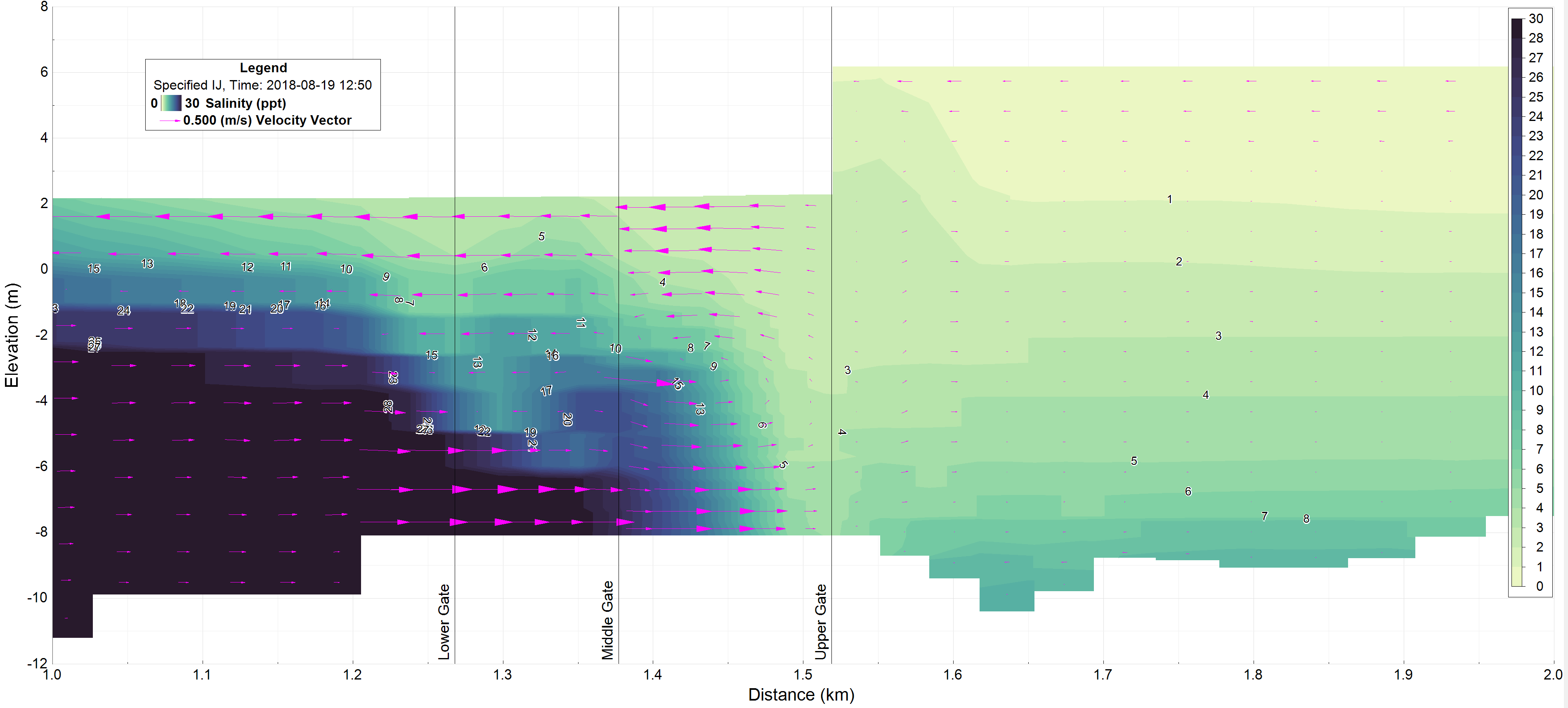
This figure vividly demonstrates the salt wedge effect and stratified flow behavior that can disrupt salmon migration, particularly for juveniles that prefer surface freshwater routes. The velocity pattern confirms the gravitational exchange across the lock gates, where denser saline water consistently enters at depth.
Implications for Restoration and Management
The EFDC+ model is more than a technical simulation - it’s a decision-support tool. It offers a window into:
-
Where cool-water supplementation might support salmon migration;
-
How lock operations could be optimized to reduce harmful stratification;
-
And when water quality thresholds are breached, how they affect fish behavior.
Moreover, this modeling framework is transferable to other urban estuaries or river systems facing similar challenges with anthropogenic structures and ecological flows.
Conclusion
As cities grow and water infrastructure ages, the challenge of balancing human and ecological needs becomes more urgent. The Ballard Locks are a prime example: essential for navigation yet critical to the life cycle of endangered salmon species. By combining high-resolution hydrodynamic modeling with ecological thresholds and operational simulations, the EFDC+ model provides insights that can help restore balance—not just for Seattle, but for water systems worldwide.

